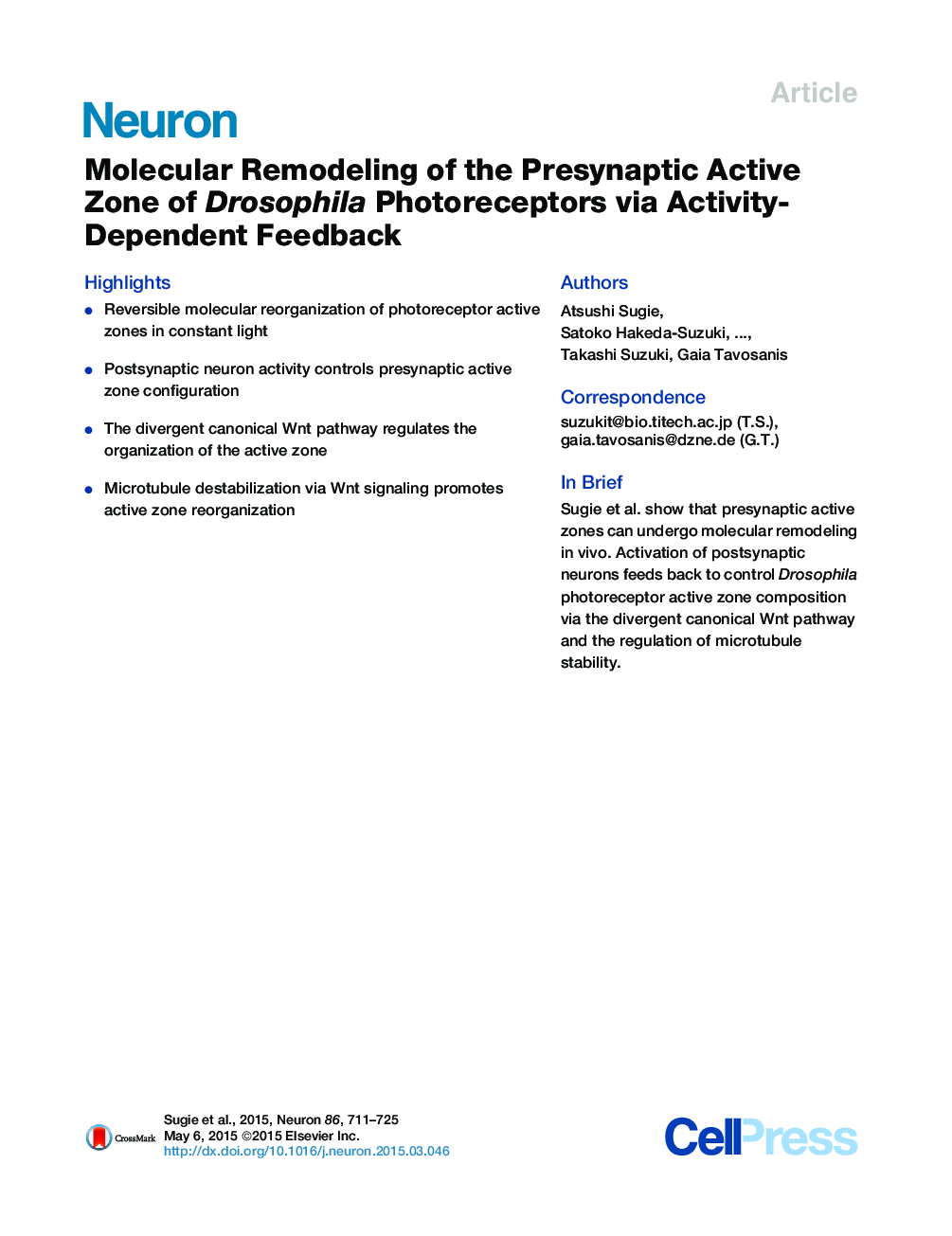| Article ID | Journal | Published Year | Pages | File Type |
|---|---|---|---|---|
| 4320933 | Neuron | 2015 | 15 Pages |
•Reversible molecular reorganization of photoreceptor active zones in constant light•Postsynaptic neuron activity controls presynaptic active zone configuration•The divergent canonical Wnt pathway regulates the organization of the active zone•Microtubule destabilization via Wnt signaling promotes active zone reorganization
SummaryNeural activity contributes to the regulation of the properties of synapses in sensory systems, allowing for adjustment to a changing environment. Little is known about how synaptic molecular components are regulated to achieve activity-dependent plasticity at central synapses. Here, we found that after prolonged exposure to natural ambient light the presynaptic active zone in Drosophila photoreceptors undergoes reversible remodeling, including loss of Bruchpilot, DLiprin-α, and DRBP, but not of DSyd-1 or Cacophony. The level of depolarization of the postsynaptic neurons is critical for the light-induced changes in active zone composition in the photoreceptors, indicating the existence of a feedback signal. In search of this signal, we have identified a crucial role of microtubule meshwork organization downstream of the divergent canonical Wnt pathway, potentially via Kinesin-3 Imac. These data reveal that active zone composition can be regulated in vivo and identify the underlying molecular machinery.
